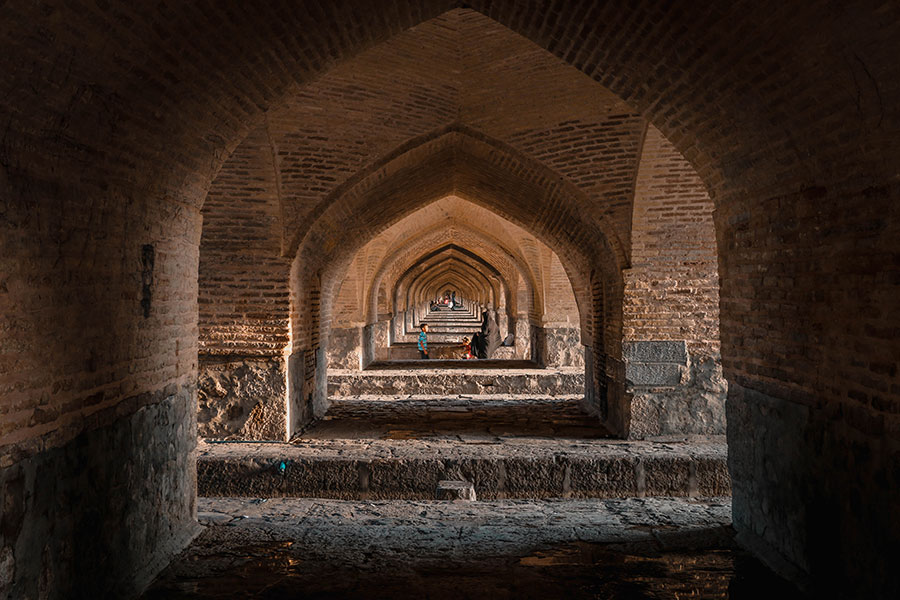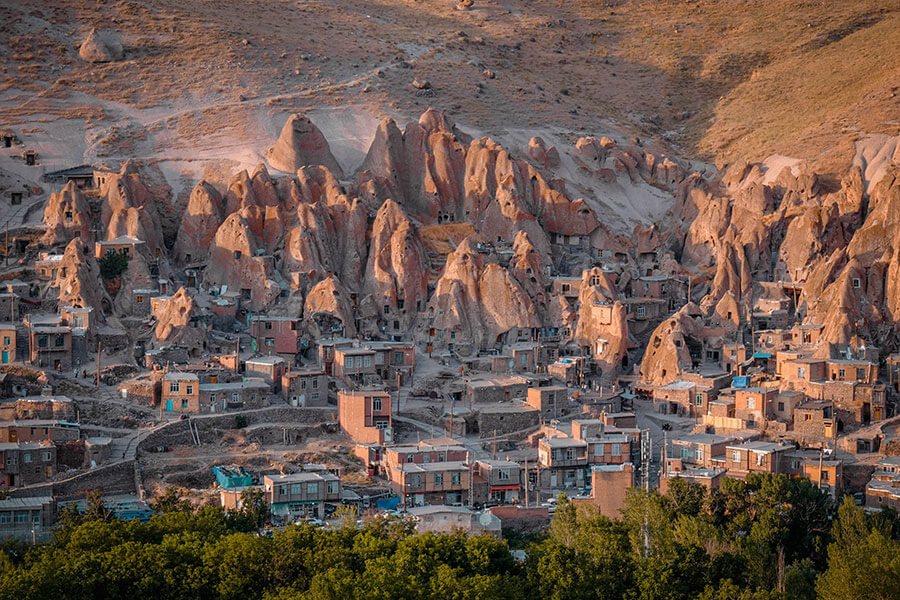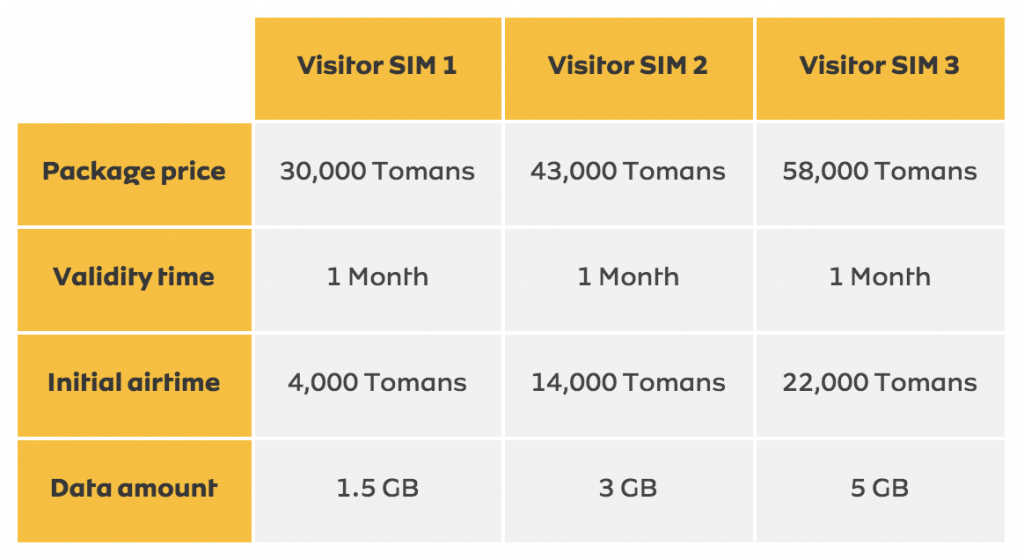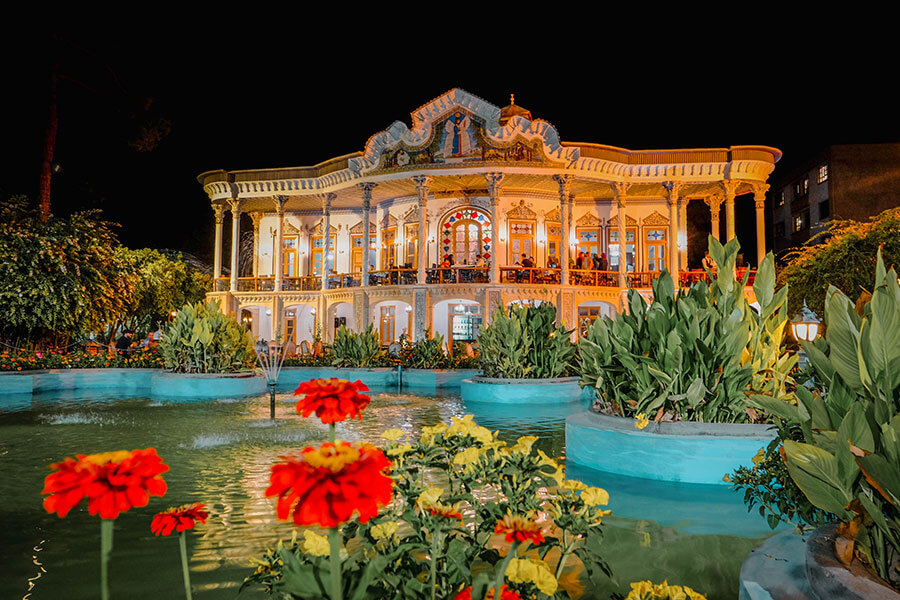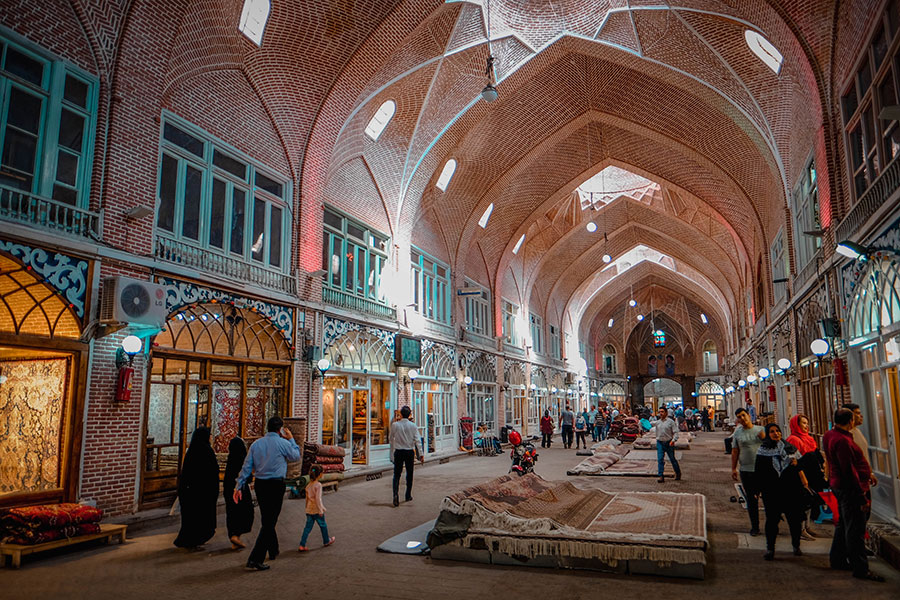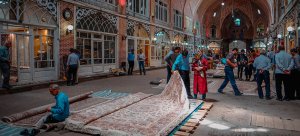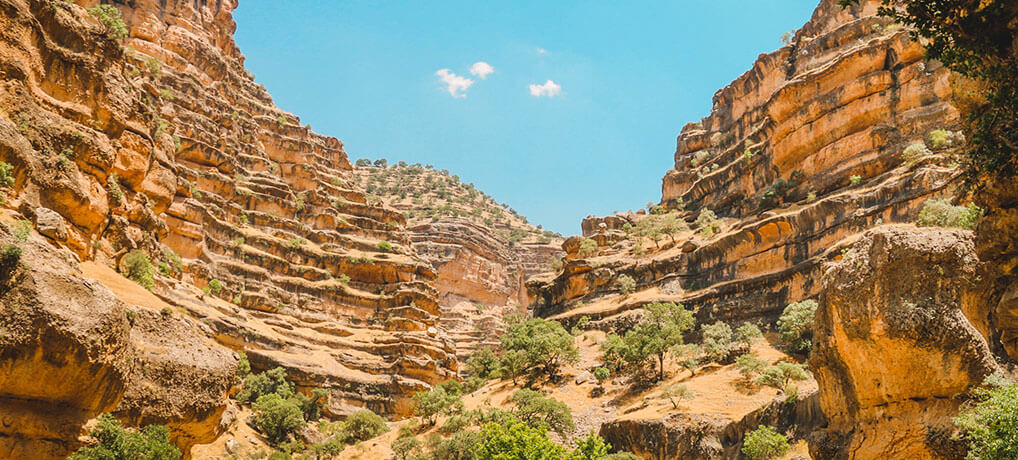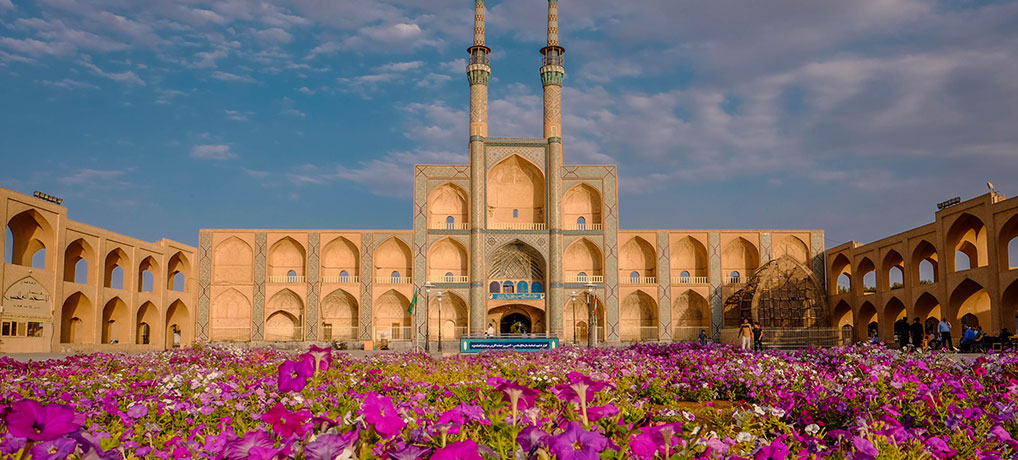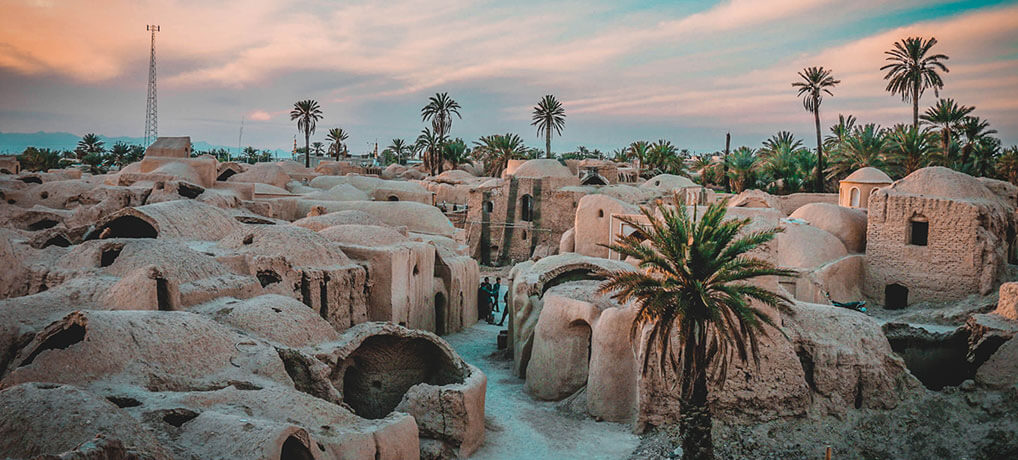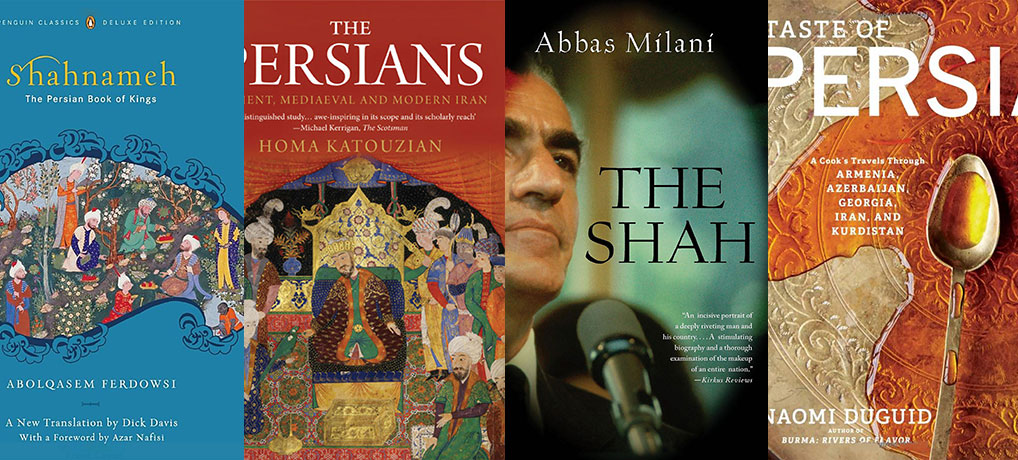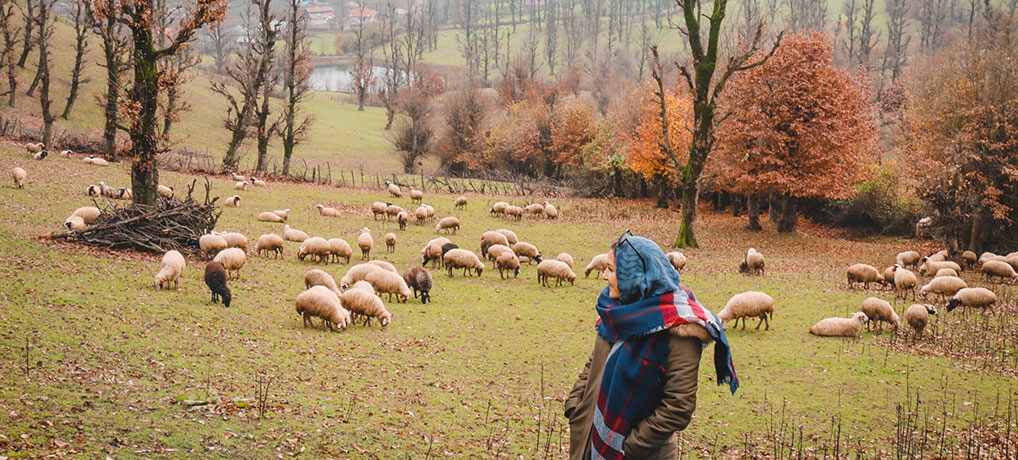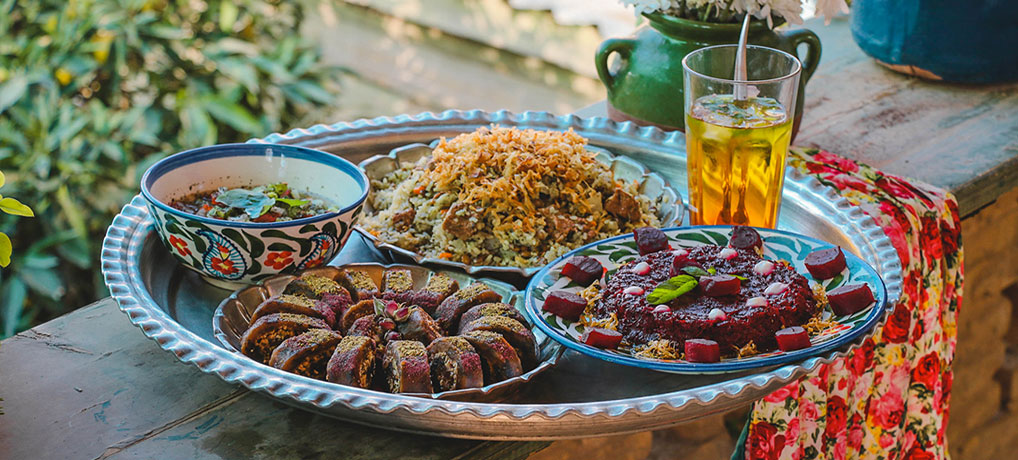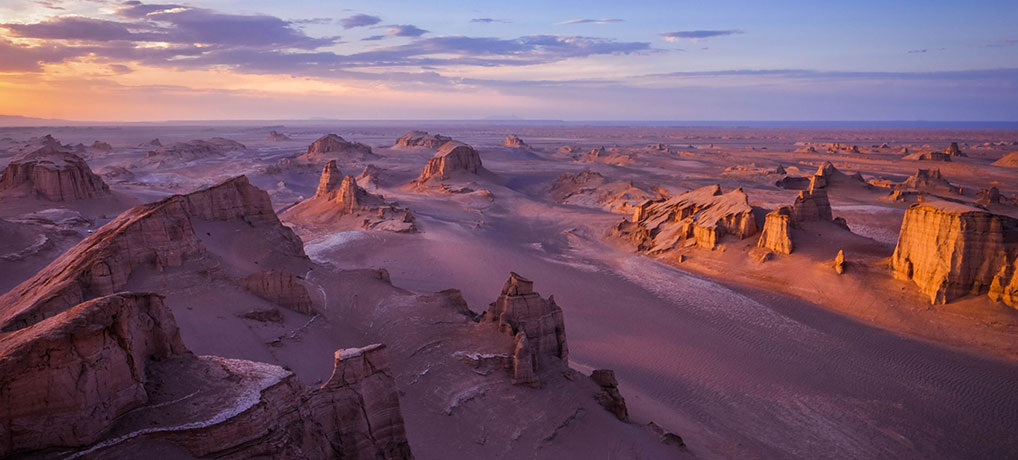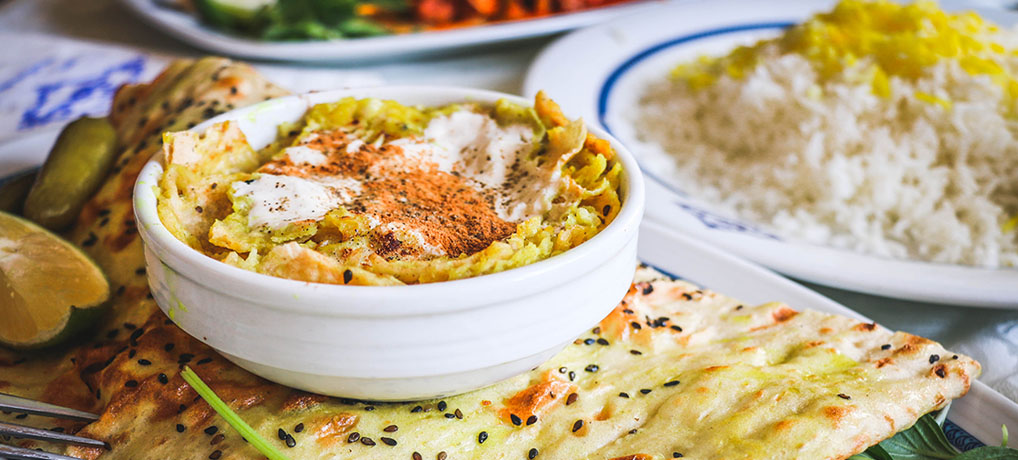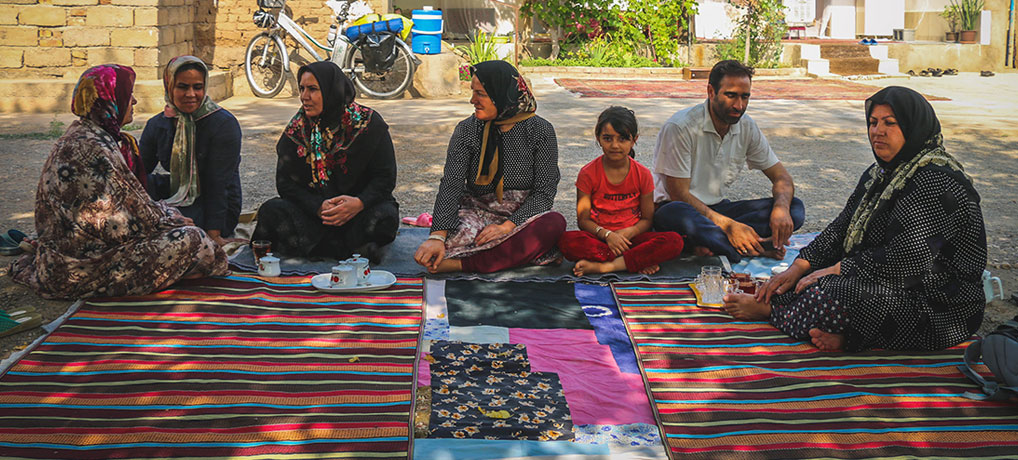Iran Travel Guide
This Iran Travel Guide is written by a local (that’s me!) who’s been traveling in Iran for years as a tourist, a guide and a travel blogger. There will be constant revisions as I travel to old and new destinations all the time.
Traveling to Iran or Persia as some would like to call it (!) has become quite popular in the past few years. Once tourists started flowing after the Iran Deal, nothing could stop them. Not even the Iran travel ban.
The news got spread out. A destination that was once unknown, has a new meaning now. For many travelers, Iran became a highlight of their travels and the number of returning travelers is on the rise.
I know that Iran might still be quite a mystery to many and the horrible media coverage has never stopped, but If you’re even slightly considering a trip to Iran, this post is here to give you all the information you need to plan that trip to Iran.
So here’s everything you need to know about Iran:
Contents
hide
Can everyone travel to Iran?
Everyone except citizens of Israel can travel to Iran. If you’ve traveled to Israel before, as long as you have a new passport or never got the visa stamp, you’re eligible for a trip to Iran.
Can Americans, British, and Canadians visit Iran?
Yes! US, UK, and Canadian citizens can all travel to Iran as long as they travel with a guided tour. Whether it’s a private tour, or you’re joining a group, it won’t matter. What’s important for the Iranian government is that you have a certified guide, a fixed itinerary, and accommodation that has been organized by your agency of choice.
The Iran visa process for American, British and Canadians are all arranged by the tour agency and you don’t have to take care of anything by yourself.
When’s the best time to travel to Iran?
The best time to travel to Iran is in spring (May-June) and autumn (late September to early November).
Spring
The Persian new year (Nowruz) happens on March 20th, the first day of spring according to the Persian calendar. Now if you don’t want to get stuck in traffic or face big crowds and wait in long lines for the main attractions, it’s better to skip new year holidays and come to Iran a few days after. The holidays last for two whole weeks (some years a few days longer) starting from the day of Nowruz.
After the holidays, while schools have reopened and everyone’s back to work, there’s a flow of foreign tourists – Imagine big buses of German tourists everywhere. This is the top season for Iran’s incoming tourism when hotels are booked ages in advance and reserving a table at your favorite restaurant can be a pain. However, it’s the most delightful time of the year to be in Iran in terms of weather and natural beauty.
Please also note that the month of Ramadan is currently happening during springtime, so you might want to be fully aware of the dates and limitations you could have. Read our post on Ramadan in Iran for all the information you might need.
Summer
Summers in Iran are hot – And I mean really hot. If like many people, August is the only time you can take a long break from work then I’d say go for it. It’s not as unbearable as you might think. If you’re not visiting the northern and southern coastlines you won’t be dealing with any humidity which can really make a difference. However, make sure you keep hydrated and pack the right kind of clothing.
Autumn
Autumn in Iran is absolutely the best time to visit the country. The weather’s great, crowds aren’t very big and you could visit anywhere from the north to south without facing any severe weather conditions. It’s also when we celebrate Yalda (winter solstice) in Iran which could be lovely to witness.
Winter
Winter is a great time to visit the south and perhaps some of Iran’s islands in the Persian Gulf such as Qeshm or Hormuz.
With the whole global warming situation, you don’t really know what to expect of Iran’s winter any more, but it’s usually cold and dry. Temperatures could drop to below zero and there’s a chance of snow only a couple of days throughout winter in central Iran.
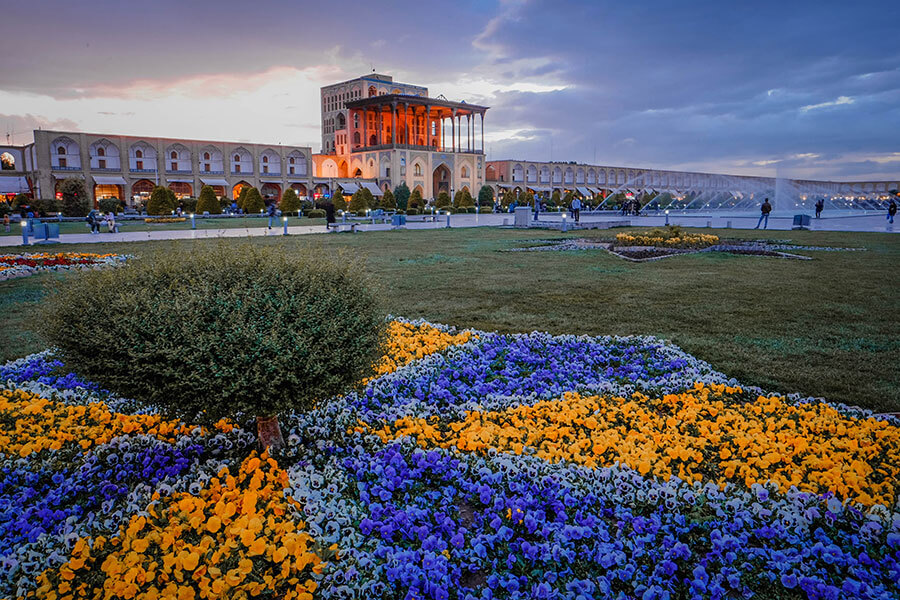
Iran Visa Policy | How to get an Iran visa?
We’re written a long and extensive post of Iran visa everyone would need to get a visa for Iran unless they are from one of the following countries: Armenia, Azerbaijan, Bolivia, China, Egypt, Georgia, Lebanon, Malaysia, Oman, Syria, Turkey, and Venezuela.
Iran visa requirements:
A passport with 6 months validity, a passport photo, travel insurance, a return ticket and a hotel voucher for your first night is all you need to apply for a visa to Iran. Of course, you’d also have to have money to pay for the visa which can vary between 40€-150€ depending on your nationality.
Iran visa on arrival
Unless you’re from the USA, UK, Canada, Colombia, Somalia, Bangladesh, Jordan, Iraq, Afghanistan, Pakistan, or India, you’re eligible to apply for a visa on arrival in Iran with the documents I mentioned above.
Iran E-visa and authorization code
If you freak out about the slightest chance of getting rejected for a visa on arrival or you don’t want to wait for a couple of hours, we’d highly recommend trying the easy and affordable E-Visa. For only 15€ 1stQuest takes care of your visa in a few days and gives you an authorization code with which you can pick up your visa at the embassy or one of the main airports of Iran.
Travel insurance for Iran
The acceptable travel insurance for an Iran visa must clearly indicate it’s coverage of Iran. If yours doesn’t, you’d be forced to buy insurance at the airport. To avoid trouble, we’d suggest buying affordable travel insurance through 1stQuest in advance.
Iran visa rejection/refusal to entry to Iran
Your visa request for Iran can be rejected if you have a stamp or proof of travel to Israel in your passport. If you’re also a journalist/reporter there might be a risk of rejection, so always apply for your visa in advance.
Under the Khajoo bridge, Esfahan | Photo by my friend Ivan Dogic
Is it safe to travel to Iran?
Absolutely! Despite all the horrible media coverage, Iran is one of the safest countries to travel. If you’d like to go into details and be aware of everything, we’d suggest reading our guide on safety in Iran.
Can I travel to Iran alone?
Yes, you can! Many travelers do and it’s not a problem. Iranians are super hospitable and you’ll be hardly spending much of your time alone. Perhaps even one of the great things about traveling alone to Iran is the chance of getting to know more people throughout your journey. For many travelers, the best part of Iran is the people.
Solo female travel to Iran
Traveling alone in Iran as a woman is not uncommon. Iran is still quite a conservative country and etiquettes can be different from one region to another. But if you’re a frequent traveler, know how to dress properly and you’re prepared for the risk of harassment, solo female travel to Iran is nothing crazy. In fact, many women are doing.
Iran tours vs. independent travel (best tour packages)
Independent travel to Iran is relatively easy. A lot of younger people speak some English and getting around is quite simple.
While traveling in Iran, you’re likely to be approached by locals way too often. Iranians are both hospitable and curious. They love to mingle with foreign tourists, get their opinion on Iran and improve their English skills. Getting invited to an Iranian home is also not uncommon. Traveling independently to Iran with a flexible itinerary gives you the freedom of taking your chance with the people and everything that comes with it.
However, Iran is a big country. Joining a tour to Iran gives you the chance to tick off many attractions from your list. You’d probably be able to see much more in a short time without wasting too much time on the road.
Also, having a guide in certain places such as Persepolis or Naqsh-e Jahan sq. can give you a whole different perspective.
So if you’re a history buff, have a huge list of sights to check and would like to leave everything to the professionals I’d highly suggest joining one of the tours from either Intrepid or Pasargad tours.
Couchsurfing in Iran
Couchsurfing in Iran is officially illegal, but that doesn’t mean it doesn’t happen. In fact, it’s getting popular amongst younger tourists. We’d highly suggest bringing something along for your Iranian hosts as their likely to go overboard with the hospitality. Something like chocolates, magnets or small souvenirs from your country would work. If they’ve been super nice (which they probably will be), take them out for a nice dinner and insist on paying for it.
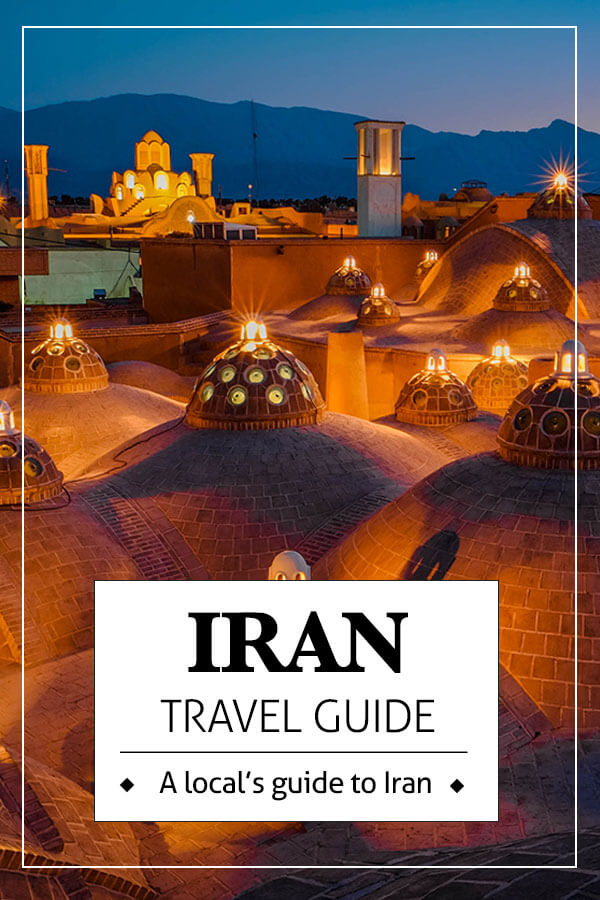
Dress code in Iran | What to wear?
Women in Iran must cover their hair with a headscarf and wear long coats or manteau covering their arms and also their bum. Men should just avoid shorts and tank tops.
The dress code in Iran is not observed that strictly and you’d see many women wearing short tunics, loose headscarves, and skinny jeans. There’s no reason you should make it hard on yourself. In fact, I see many foreign tourists with turbans and short tunics and everything seems to be fine.
Read our extensive Iran dress code guide to know how you can mix and match your already owned clothing for Iran. There’s lots of inspiration.
What to pack for Iran?
- Have a headscarf in your carry on luggage before arrival as you’d need to follow the dress code upon arriving at the airport in Iran.
- Toilet paper is unlikely to be found in public toilets, so we’d suggest always having tissues in your bag.
- A water bottle can come handy as tap water is drinkable in Iran and drinking water is easy to find on the streets. It also helps with the environment.
- Cotton scarves are a must for women. I see so many female tourists struggling with keeping the hijab on their heads and for most of them, it’s due to the fabric they’ve chosen. Cotton is light, doesn’t slip and you can even secure it with a bobby pin on the side if it’s too much to handle.
- Maxi dresses or maxi skirts are great for getting around the city in Iran during the hot weather.
Iran destinations and tourist attractions
UNESCO World Heritage Sites in Iran
Did you know that there are 24 UNESCO world heritage sites in Iran, 2 of which are natural heritage? Lut desert, Jame mosque of Esfahan, Bam, Persepolis, and Shushtar Historical Hydraulic System are among our favorites.
The Best Iran itinerary
We’ve written so many Iran itineraries and they’re something you could choose from. But for many people an itinerary that covers central Iran and the cities of Tehran, Esfahan, Shiraz, and Yazd is the best one to go for their first trip. We’ve exactly written a 2-week Iran itinerary which covers the best of the classic route and we believe 2 weeks would be a good time to stay in Iran without having to rush into things.
Kandovan village near Tabriz | Photo by my friend Ivan Dogic
Best offbeat places to visit in Iran
If you’d like to stay longer in Iran or wouldn’t mind making day trip during your 2-weeks to some remote areas such as the desert, we have a full list of offbeat destination in Iran to pick. Some of our favorites are:
- The Lut desert
- Village of Esfahak in Tabas
- Village of Palangan
- Hurmuz island
- Pamenar village in Khuzestan
Accommodation in Iran
In the past few years, there has been an increase in the number of accommodations in Iran, especially budget eco-lodges and hotels. If nothing, hostels have been growing like mushrooms in big cities and there’s plenty to choose from.
Booking your accommodation in Iran is unfortunately not available on international websites such as Booking. Most hotels also don’t respond to direct booking promptly. However, there are a few Iranian websites such as 1stQuest from which you can book your stay online and pay with your credit card.
Best places to stay in Iran
Best hotels/hostels in Tehran
- Budget: Cedar hostel
- Average: Hana Boutique hotel,
- Luxury: Persian Azadi hotel
Best hotels/hostels in Esfahan
- Budget: Mahbibi hotel, Homayouni hostel
- Average: Kianpour historical house
- Luxury: Qasr-e Monshi hotel
Best hotels/hostels in Shiraz:
- Budget: Taha hostel
- Average: Panj Dari hotel, Pasin traditional hotel
- Luxury: Darb-e Shazdeh boutique hotel
Best hotels/hostels in Yazd:
- Budget: Rest up hostel
- Average: Narenjestan Traditional house
- Luxury: Dad hotel
Public transportation in Iran
We’ve written an explicit post on public transportation in Iran but here’s everything in summary.
Metro
Major cities in Iran such as Tehran, Mashhad, Esfahan and Shiraz have metro systems. The most well connected metro is for Tehran and we’d highly suggest it to get around the city. It’s super cheap, has air conditioning and takes you close to most of the main tourist attractions.
Please keep in mind that the last carriages on each side of the train are for only women while the rest can be used by both men and women. There is no such thing as separate carriages in Tehran’s metro. You’re likely to see the middle carriages dominated by men, but it does not mean you cannot get on them if you’re a woman. You don’t need to be accompanied by a man either.
Inner-city buses and Express buses
All cities within Iran have public bus systems and the bigger ones also have express bus lines. You would have to use your metro card to get on any of the buses. While the express buses (red buses) can be great for Tehran, we don’t recommend the normal blue buses as they are quite slow and take long routes.
Innercity buses in Iran have separate sections for men and women and there are no mixed sections. For the blue buses, the women’s section is at the back while on the red express buses it’s in the front.
VIP buses
VIP buses in Iran are one of the most popular ways to travel between cities. They are air-conditioned, affordable and have comfortable reclining seats that you can easily sleep on. Even if you’re traveling for more than 6 hours which is not unlikely considering the distances in Iran. You can book your VIP bus tickets in advance here.
Domestic flights
Domestic flights are great if you’re short on time and don’t want to spend long distances on the bus. You start your trip from Tehran, then fly to Shiraz and continue the rest on land. Domestic flights are also the most convenient option if you plan on visiting Qeshm island, Chabahar or Bandar Abbas. Book your domestic flights via 1stQuest.
Can I use my credit card in Iran?
No! Thanks to the inhuman sanctions put on the Iranian people, none of our banking systems are connected internationally. Your Visa, Mastercard or Paypal account will be useless in Iran and you cannot withdraw money from ATMs. This means you will have to bring all your money in cash!
To solve this issue, Mahcard offers debit cards for your stay in Iran. They exchange your money at a good rate upon arrival and give you whiteners left in your card back in your local currency before you leave. You can use the code MAH40 to get 40% discount on your registration.
Currency in Iran | Rials or Tomans?
The official currency in Iran is Rials but you’d see few people using the term daily. Most shops also announce or write prices in Tomans which can be confusing for Iranians let alone tourists. The big number of zeros on the bill doesn’t help either.
Every 10 Rials is 1 Toman. The number on your bill is written in Rials and to know how much it would be in Tomans, you would need to omit the last zero. For example, if you have a 10,000 Rial bill, it’s worth 1000 Tomans.
If a shop owner tells you a price of something is 10,000 Tomans, just add a zero and look for the right bill to offer.
Another situation that can blow your mind is when people omit the last 3 zeros on Tomans. This happens all the time for Iranians and we’re very much used to it. Shop owners will probably avoid this with tourists but just so you know, this is how it goes:
If a price of something is 10,000 Tomans= 100,000 Rials you might find the shop owner announcing it as 10 Tomans!!! Simply because it’s just much easier and probably doesn’t sound as expensive.
So if a taxi driver tells you that your journey from Imam Khomeini Airport to your hotel in Tehran will be 80 Tomans, he basically means it will be 80,000 Tomans. This never happens with Rials, so you can breathe now. 🙂
Cost of travel to Iran
With the current fluctuation of Rial and the inflation on prices, prices can change in a matter of days. Yes, it’s just as crazy as that!
But considering the drop in the value of Rial during the past year, cost of travel to Iran is very inexpensive.
While certain fees such as accommodation and entrance fees for attractions are different for foreigners and Iranians, other costs like transportation are the same.
Cost of accommodation in Iran
Prices for hostels can start from as low as 4 Euros in low season unto 10€ for a dorm bed. A private room and bathroom in a hostel or an average hotel can be between 25-50€ and 60€ and above can provide you with a luxury stay in either a boutique hotel or a 4-5-star hotel.
Cost of public transportation in Iran
Metro costs only a few cents, taxis vary between 2-4€ and VIP buses set you back for around 4-7€ depending on the distance. Domestic flights can cost anywhere between 20-40€.
Cost of food and coffee in Iran
Eating at a super luxury restaurant in Iran will hardly ever cost above 20€ but you can eat pretty well with just half that price and even less if you’re outside of Tehran. Coffee usually costs from 1-1.50€.
Internet access in Iran
Best SIM card for Iran?
Irancell and Hamrahe Aval (MCI) are the two big operators in Iran that offer services to tourists as well. They both have a booth at Imam Khomeini international airport and we’d highly suggest that you get yours there. The SIM card will have to be registered with your name and you only need your passport to do it and then you will just have to wait for a few hours until it’s activated.
I suggest getting Irancell as they offer better English service. You can see their prices in the chart below and here’s a list of Irancell stores around Iran.
To top up your SIM card you’d have to download MyIrancell app and do the procedure accordingly. You would still need an Iranian debit card like Mahcard to finalize the payment. If you don’t have a debit card, just as an Iranian friend or your hotel receptionist to help.
Best VPN for Iran?
Certain website and apps such as Youtube, Facebook, Twitter, Telegram and different foreign news media such as CNN are blocked in Iran. But Iranians use all of them on a daily basis using VPNs.
Surfshark and ExpressVPN are great paid options but if you’re looking for a free VPN, try Hotspot Shield and make sure you’re patient with it.
Shapouri mansion, Shiraz | Photo by my friend Ivan Dogic
Facts about Iran
Is Iran an Arab country?
No! It’s not! Iran was once invaded by Arabs but it never was an Arab country.
Iranians don’t hate Americans
Iranians know very well how to distinguish people from their governments and they also expect the same from others, especially those traveling to their country. While most Iranians can’t detest Trump any more than they already do, they are actually very open and friendly towards Americans and usually have a family member that lives in the U.S.
Iranian hospitality
The level of Iranian hospitality is beyond everything you’ve ever known. Iranians treat guests like royalty and are extremely fond of foreigners traveling to their country. You will be frequently confronted by Iranians on the streets who are curious to know where you’re from and what you think of Iran.
Understanding the concept of Tarof
Tarof is when you say or insist on something due to respect. Iranians do this a lot. They insist on inviting you to their home, they insist on you to eat more at the table, they insist on keeping for dinner or staying over for the night and the list goes on…
Tarof is not always a lie. Iranians are raised to Tarof since they are young because they see it as a sign of respect. You are required to Tarof if you see an elderly with no seat on the train for example. But in many cases, Tarof is not necessarily something they truly want to do. This happens a lot with paying the bill. If Iranians go out with friends for dinner, everyone will be Tarofing to pay the bill while they actually don’t mean it.
As Iranians, we usually understand when a Tarof is real and when it’s not. For example, a taxi driver or shop owner will always say Qhabel Nadareh (meaning it’s not worthy) before you pay, but we all know that’s just for respect and he’ll probably run after us if we don’t pay.
They usually say that the trick is to refuse the Tarof 3 times and if the person still insists, then it’s probably true. It doesn’t work all the time but it’s probably the best option for a foreigner who’s unfamiliar with the culture.
Alcohol in Iran
Alcohol in Iran is prohibited. You won’t find it sold in shops or restaurants. There are plenty of people that use it illegally and it’s not unlikely to find it in parties or at people’s homes. I’d recommend avoiding it altogether. You never know where it came from or how it was made.
Driving in Iran is crazy!
Yes, Iranians are insane drivers and a big number of people get killed everywhere due to car accidents. Unless you’re going to offbeat destinations, I wouldn’t suggest driving in Iran.
The traffic is horrible
Big cities in Tehran, Esfahan, and Mashhad can have horrible traffic during rush hour. You could spend a lot of time in the taxi if it’s early in the morning or around 5-7 in the afternoon.
Iranian toilets
Most public toilets in Iran are squat toilets. You’d have to squat with your back to the hole. They are not the most comfortable but considering the fact that public toilets in Iran are usually filthy, I’d say squat toilets are a safer option.
Weekends in Iran
Weekends in Iran are Thursday and Friday. Everyone is on holiday on Fridays but many private companies, universities and high schools work on Thursdays.
Tap water is drinkable
Tap water is drinkable in most Iranian cities.
Etiquette in Iran
- Public display of affection
Holding hands between couples is completely normal in Iran. You might see them hugging in less conservative cities but you’d best avoid kissing in public.
- Thumbs-up meaning in Iran
Thumbs-up in Iranian culture is equivalent to the middle finger! But as an Iranian, I’ve actually never encountered anyone using it in that way. Pretty much most of the time, it has the same meaning as anywhere else. So don’t worry about using it. Everyone understands what you mean.
- Blowing your nose in public
Blowing your nose in public in Iran is very much like farting. Especially if you’re at the table. Please keep it for the bathroom or in your privacy if you don’t want some disgusted looks.
- Shaking hands with women
Conservative Iranian women avoid shaking hands with men. To be on the safe side, we suggest always waiting for women to offer their hand to you and not going first.
- Take your shoes off inside mosques and houses
You’re required to take your shoes off when entering someone’s home, a mosque or anywhere else with a carpet.
Food in Iran
It can be very easy to repeat dishes in Iran if you don’t where to look. Average restaurant menus have very limited Persian food options and it’s usually the same wherever you go. That’s why we’ve prepared a detailed Persian food guide that will tell what dishes you must try in each city and the best places to find them.
Vegetarian food in Iran
Vegetarian food is so easy to find if you’re not into countless portions of rice and eggplants. But these are the most common dishes you can find on restaurants menus that are extremely delicious and healthy:
- Ash (vegetable and beans soup)
- Kashk-e Bademjan (eggplant dip)
- Mirza Ghasemi (smoked eggplants and egg dip)
- Kookoo Sabzi (herbs and eggs in a tortilla or Spanish omelet form)
Festivals and Traditions in Iran
There are numerous festivals and traditions in every Iranian province. Nowruz celebration in Kurdistan, rosewater distillation Festival in Kashan or the Boushehr music festival are a few examples. But there are two very important periods in Iran that could highly affect your trip.
Ramadan
Ramadan in Iran will start on the 6th of May 2019 and it will last for a whole month. This is the time when Muslims fast from sunrise to sunset and it makes a huge difference in everyone’s lifestyle. We’ve written a very detailed post about Ramadan in Iran. Make sure you read it and come prepared.
Muharram
Muharram is a month of religious mourning. It will start on the 1st of September 2019 and the first 10 days are the most important. The 9th and 10th of September are the days of Tasooa and Ashura when the big festival happens. They are national holidays and almost nowhere will be open. In the past few years, Muharram and the traditions of Ashura have become a tourist attraction of its own. Many tourists actually come to see the huge ceremony and even participate in the food preparations. We’d highly suggest reading our post on Muharram in Iran to know all about the festival and how you could participate.
Tabriz Bazaar | Photo by my friend Ivan Dogic
Shopping in Iran | Iranian souvenirs to buy
Iran is truly a shoppers’ paradise if you’re into handmade products and food. Whether you’re looking for something as expensive as carpets or just want some spices, there’s plenty to choose from. Check out our Iranian souvenirs guide to know exactly what to buy in each city.

